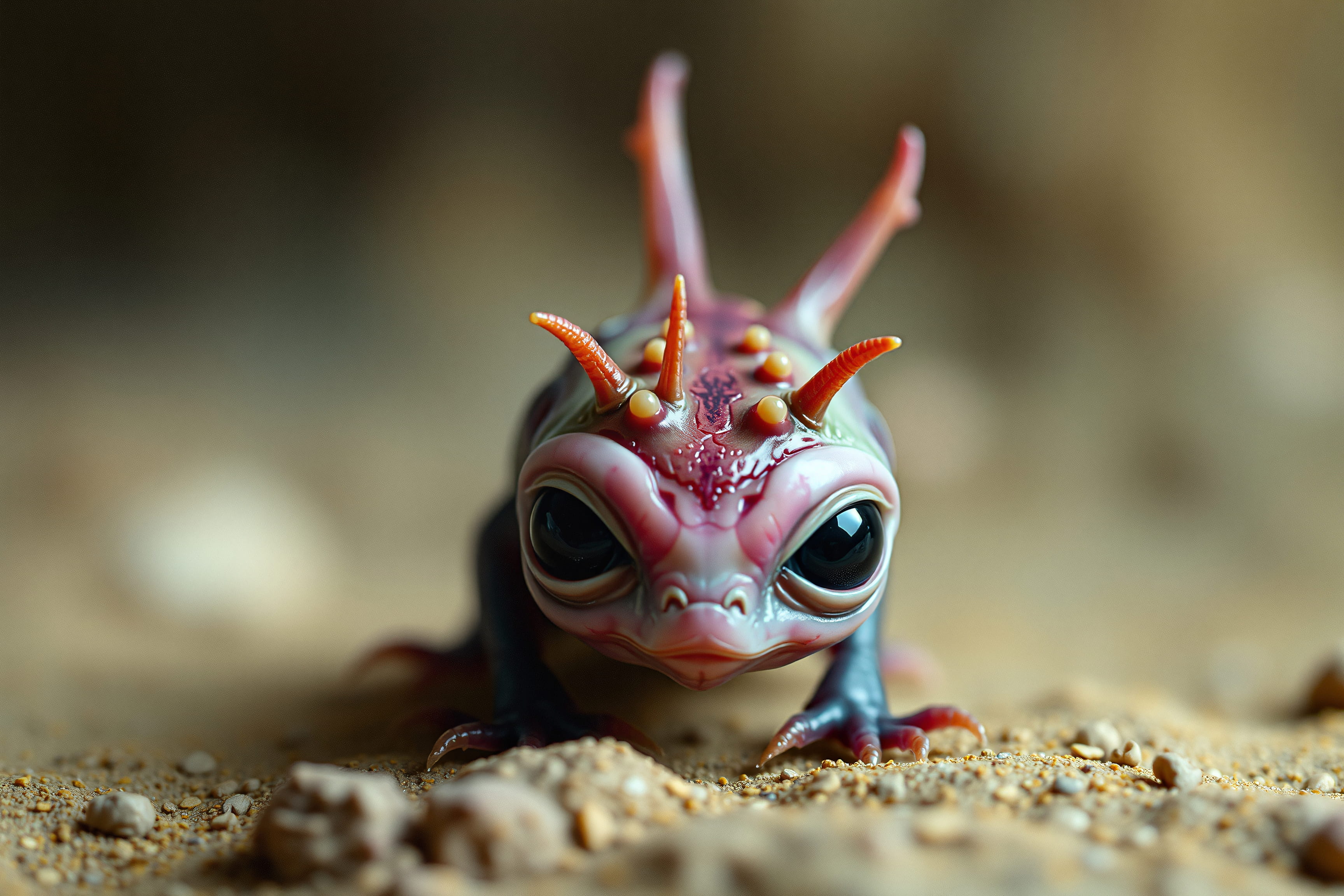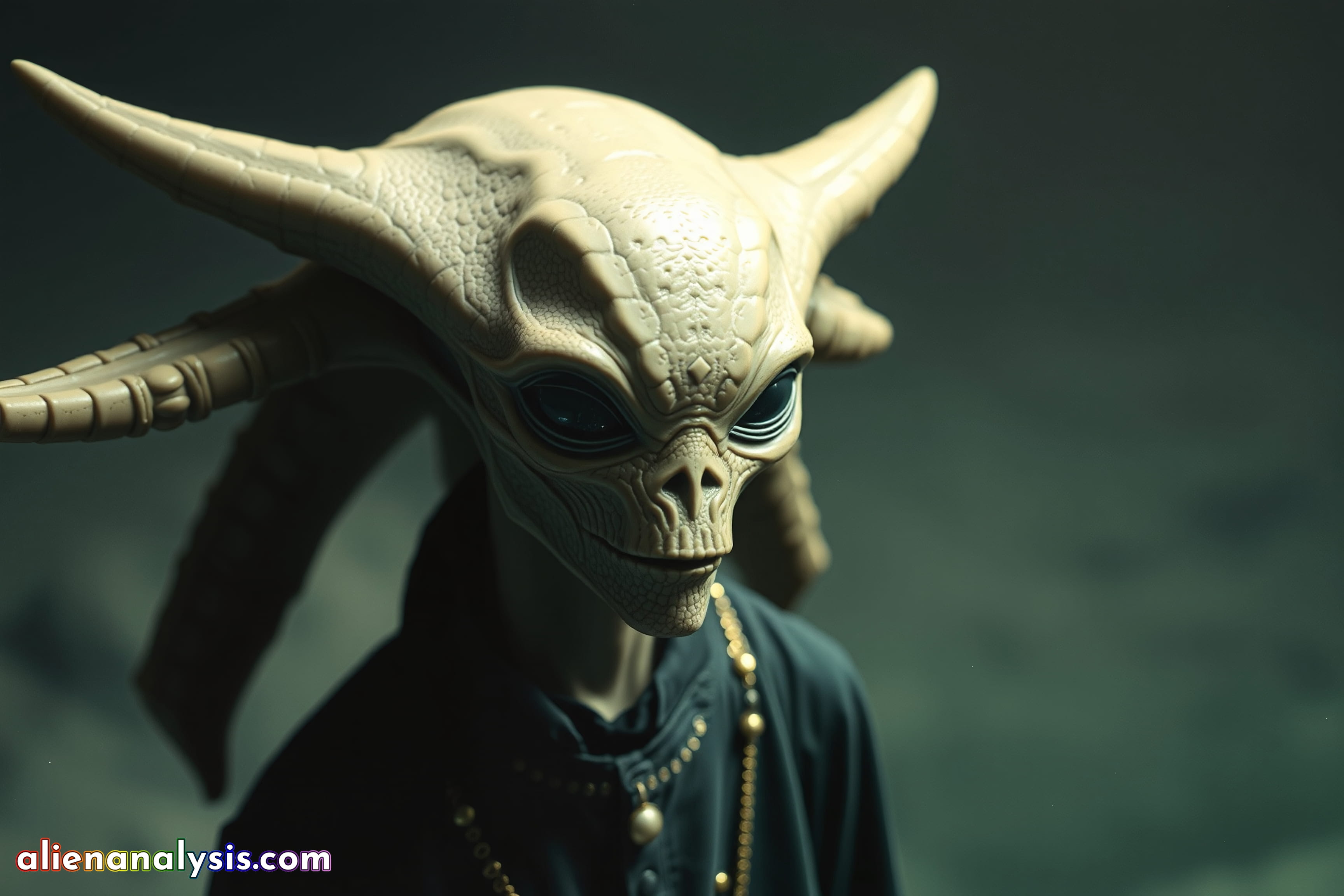
Draconis sapiens

The entity depicted in the image appears to belong to an advanced, possibly elder member of an extraterrestrial species, which could be classified within the genus Draconis sapiens, meaning "wise dragon." This classification reflects the being’s reptilian features, as well as its evident intelligence and possible social or cultural sophistication.
Morphological Characteristics:
Cranial Structure: The being possesses a prominent, heavily ridged skull with multiple horn-like protrusions extending from its head. These horns, likely made of a keratinous or similarly durable material, may serve several functions, including species identification, defense, or even thermoregulation by dissipating excess heat. The ridges and patterns on the skull indicate a highly evolved creature, possibly with complex sensory organs embedded within the bone structure.
Eyes: The large, almond-shaped eyes are indicative of a species with advanced vision, likely adapted to see across multiple spectrums of light. The dark color and size of the eyes suggest an ability to see in low light, perhaps even in complete darkness, which could point to a native habitat with dim or fluctuating light conditions, such as deep caves or a planet with a thick atmosphere.
Facial Structure: The facial features, particularly the nasal and mouth regions, have a distinctly skeletal appearance, possibly an adaptation for an efficient respiratory system or a means of vocalization unique to this species. The structure could also serve as a natural filter, allowing the being to survive in environments with particulates or thin atmospheres.
Skin and Texture: The skin appears tough and textured, similar to that of reptiles or certain desert-dwelling creatures. This likely serves as protection against environmental hazards such as extreme temperatures, UV radiation, or physical abrasions. The pale, almost bone-like color of the skin could be a natural camouflage in environments with similarly colored landscapes, such as rocky or sandy terrains.
Behavioral and Environmental Adaptations:
Clothing and Adornments: The being is draped in what appears to be ceremonial or formal clothing, indicating a high level of cultural development. The beads or jewelry suggest a society that values symbols of status, achievement, or religious affiliation. The attire could also be functional, perhaps made of materials that protect against environmental conditions or signify rank within a social hierarchy.
Social Structure: The adornments and elaborate cranial features imply that this species has a complex social structure, possibly with roles or ranks that are visually signaled through physical traits and clothing. The being’s posture and attire suggest it holds a position of significance within its community, such as a leader, elder, or spiritual figure.
Communication: The being’s facial structure, particularly the pronounced nasal passages, might indicate a unique form of communication, possibly involving low-frequency sounds, resonance through the skull, or even telepathic abilities. The species may have developed a language that incorporates these sounds, combined with visual cues given the species' advanced vision.
Hypothetical Habitat:
The Draconis sapiens species likely originates from a planet with harsh conditions, such as a rocky desert or mountainous terrain, where the tough skin and powerful cranial features would be advantageous. The being’s adaptations suggest a world with extreme temperatures, limited resources, and possibly subterranean or cavernous environments where it would need to navigate and survive.
The planet might have a thick atmosphere or frequent dust storms, requiring a respiratory system adapted to filter particulates and a visual system capable of piercing through obscured conditions.
Conclusion:
This being, a member of the Draconis sapiens genus, represents an advanced and possibly elder individual of a species that has evolved to survive in challenging environments. Its elaborate physical traits and ceremonial attire suggest a culture with deep social, spiritual, or hierarchical structures. The species likely possesses significant intelligence and may have a long history of cultural evolution, with traditions and roles that are visually and behaviorally expressed through their physical features and attire. The Draconis sapiens are probably a dominant species on their planet, with a rich cultural heritage and possibly advanced technologies or spiritual practices that reflect their environment and history.